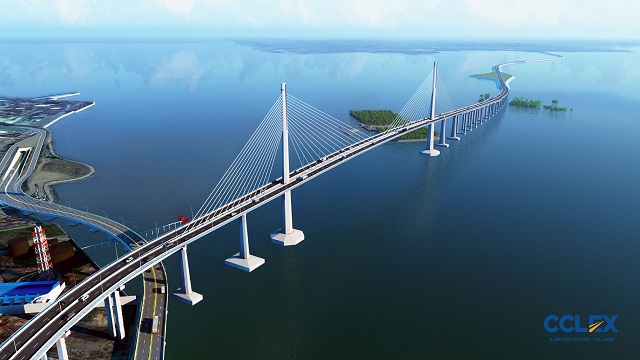(SPOT.ph) We know you're always on the lookout for new destinations—and sometimes, just somewhere to drive. Here is something new to put on your bucket list: the Cebu-Cordova Link Expressway. The bridge, which is currently under construction, will span a total of 8.5 kilometers, linking Mactan Island to mainland Cebu via Cordova and Cebu City. If all goes according to plan, the massive project will be complete by 2021. We lay down all the cool facts and important details you should know about this landmark!

It will be longer than San Juanico Bridge
Popularly credited as the longest bridge to stretch over a body of water without land breaks in the Philippines, the Marcos-era structure may finally have some competition. The Cebu-Cordova bridge will span a total of 8.5 kilometers—though just how much of that will span unbroken over Mactan's waters is yet to be verified.
The main body of the expressway will have two lanes serving an estimated 50,000 vehicles daily. This will ideally lighten the load on the two bridges currently serving as Mactan and Cebu cities' connection: the Marcelo Fernan Bridge and the Mandaue-Mactan Bridge. On and off ramps will be located along the Cebu South Coastal Road while a viaduct will level down to a causeway in Cordova’s Barangay Pilipog, according to the Cebu-Cordova Link Expressway (CCLEX) site.

The bridge is designed to safely support speeds of up to 80 kilometers per hour, though it would be nice to drive slow and take in the city and sea views. There will also be a clearance of 51 meters below to allow for traffic on the seas to flow smoothly.
The bridge will pay homage to Cebu's history as the seat of Philippine Christianity
[facebook:https://ift.tt/2JS70Q9]
[facebook:https://ift.tt/3lQTkSI]
The twin pylons on the cable-stayed main bridge will have massive crosses on all four sides, designed to light up at night and serve as a symbol of Cebu's rich history. The crosses themselves will rise to around 40 meters tall. Installation of these massive crosses began in November.
These crosses are a reference to Magellan's cross, an important landmark in Cebu City, according to the DISSING+WEITLING architecture, the Denmark-based company behind the bridge's conceptual design. Ferdinand Magellan is believed to have planted a cross in Cebu in 1521—the first one ever—marking the place as the Philippines' cradle of christianity.
We might just be able to cross the bridge come 2021
CCLEX is "set to be substantially completed in late 2021," according to the website's latest update. As of October 2020, the entire project was at 63.46% while construction alone was at 52.03%. Groundbreaking was held in 2017.

Work on the massive pylon towers is arguably the most visible aspect of the construction. The two towers will have a total of 14 stay cables varying between 60 meers and 210 meters in length; to put that into perspective, the typical basketball court is around 28 meters long.
The bridge is a joint venture between the Cebu-Cordova Link Expressway Corporation, a subsidiary of Manuel V. Pangilinan's Metro Pacific Tollways Corporation—the same company behind the North Luzon Expressway, Subic-Clark-Tarlac Expressway, Cavite-Manila Expressway, Cavite-Laguna Expressway, and the C5 South Link—and the local government of Cebu City and Cordova.
[ArticleReco:{"articles":["80453","83949","83004","84147"], "widget":"You'll Also Want to Read These"}]
[ArticleReco:{"articles":["84543","84550","84383","84534"], "widget":"Hot Stories You Might Have Missed"}]
Hey, Spotters! Check us out on Viber to join our Community and subscribe to our Chatbot.
Source: Spot PH
No comments:
Post a Comment